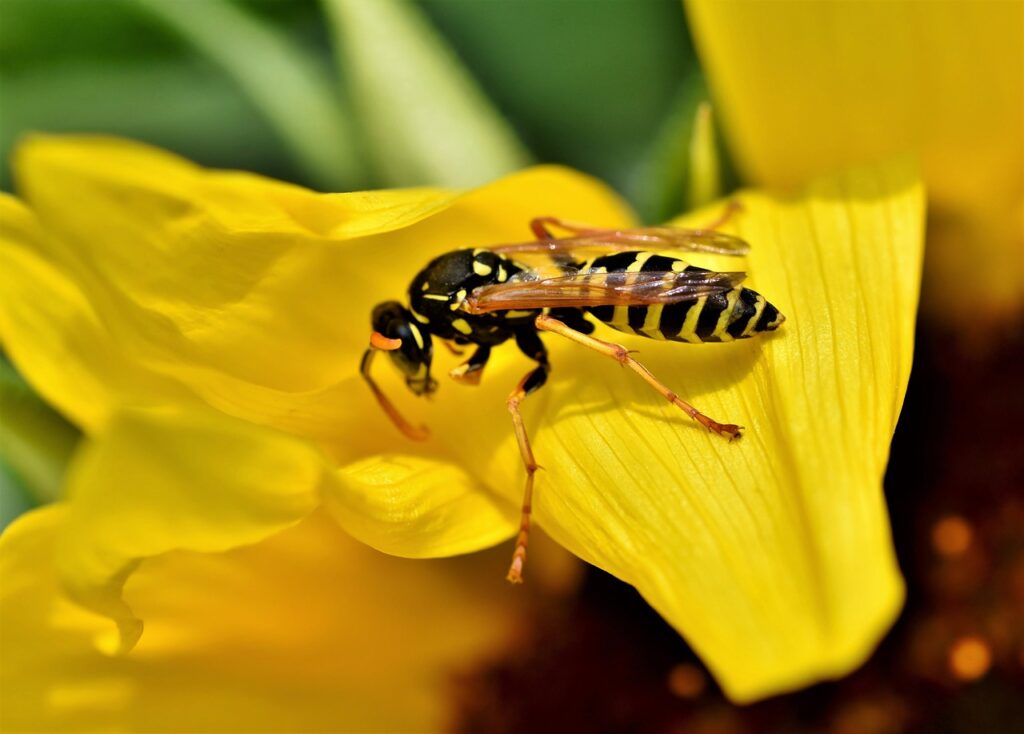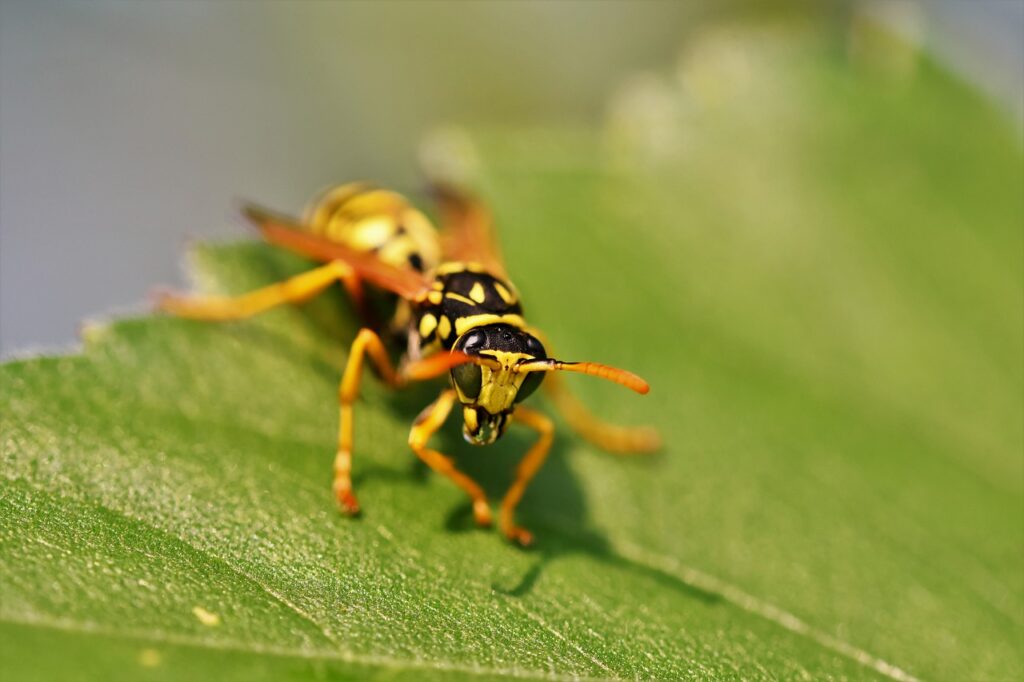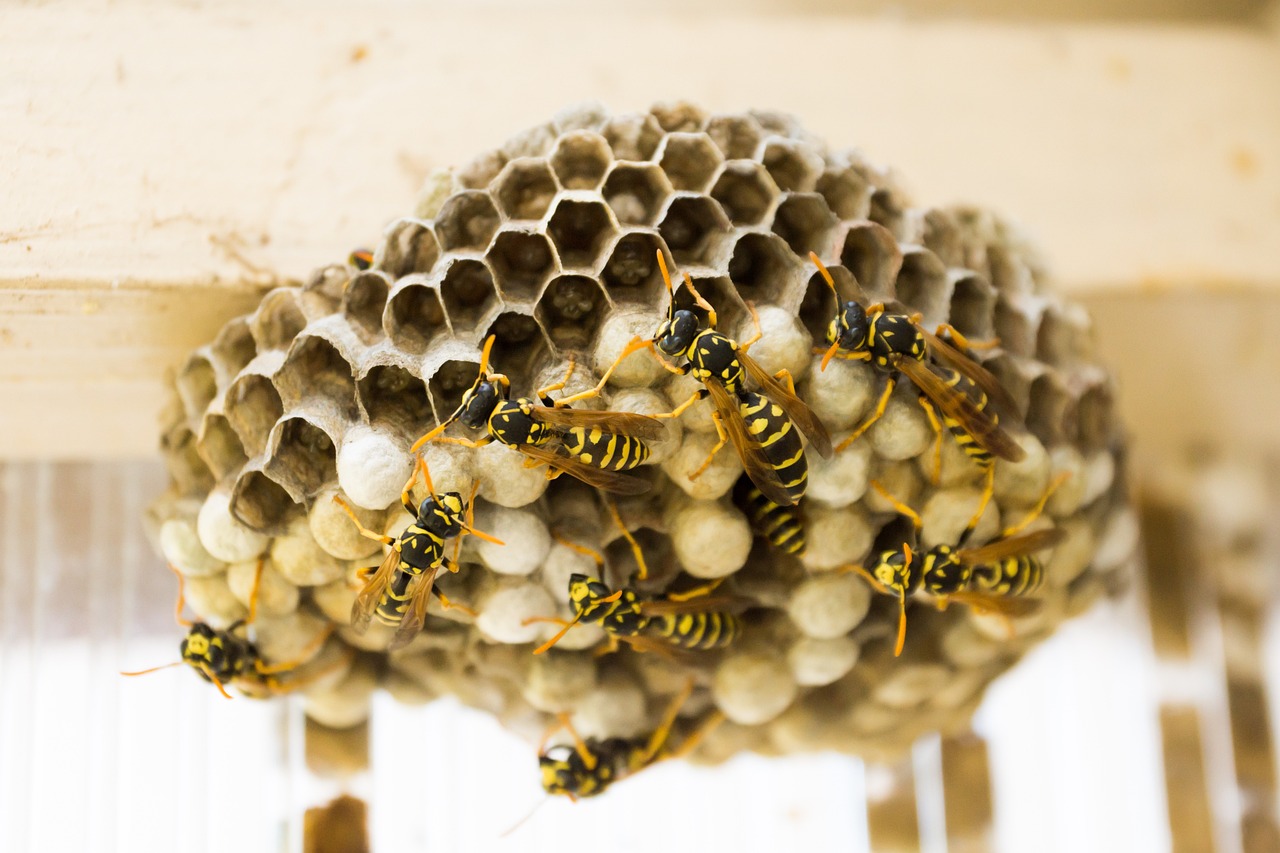You really don’t want wasps around your house. Wasps build nests and can sting you — and nobody likes wasp stings. Wasp stings are not only painful but can, in some cases, cause a severe allergic reaction. But even if you try to prevent them, wasps are always buzzing around your property. Why are there so many wasps around your house?
So many wasps around your house — why?
1. Food is easily accessible around your house
Wasps are opportunistic feeders that are attracted to two particular food types — protein-based foods and sweet substances. These stinging pests like protein-based foods because they use these to sustain themselves and their larvae. Around human settlements, protein-based foods are also easy to find. They include fish, meat, pet food, and even leftovers in the garbage can.
These stinging pests like sweet substances because they are naturally attracted to nectar and plant secretions. So, they are also attracted to human foods that are quite similar, such as fruits and sugary drinks.
You have so many wasps around your house because protein-based foods and sweet substances are easily accessible there. Maybe you always have your doors and windows open. Maybe you have exposed and overflowing garbage cans. And maybe you have a thriving garden with lots of produce.
2. Certain scents can attract wasps
Wasps are sensitive to certain scents. They are either highly attracted or highly repelled by these scents. Many homeowners take advantage of this in trying to get rid of wasps naturally. For example, people use lemongrass or peppermint essential oil to get rid of wasps because these ingredients repel them.
It’s important to know what scents attract wasps too. This way, you can avoid having these scents around your property to minimize the risk of wasp infestations.
Wasps are attracted to food scents, especially the scents of protein-based foods and sweet substances, such as meat and ripe fruits. They are also attracted to floral scents since they are naturally inclined to seek out flowers. And they are also attracted to synthetic scents such as colognes, perfumes, and scented hygiene products, especially if their scents are floral or fruity.

3. There are suitable nesting sites nearby
You have so many wasps around your house because you have a lot of spots suitable for nesting. These spots can be directly on your house, but they can also be around it. The spots on your house that are suitable for wasp nests include eaves, outdoor furniture, overhangs, and wall cavities. These spots provide shelter and protection from the elements, making them ideal places to start a wasp nest.
Wasps are also attracted to suitable nesting sites around your house, primarily in your garden, lawn, and yard. Shrubs and trees are easy targets. They provide ample protection and are close to food sources such as flowers. Certain wasp species, such as yellow jackets, like to nest underground. You may find these small holes in your garden, lawn, and yard.
4. There are accessible entry points around your property
Even if there are very few suitable nesting sites in and around your home, you can still suffer from a wasp infestation. Some wasps may find your home’s vicinity easily accessible because of open passageways. It doesn’t help if your home also has easily accessible food. These stinging pests may find a way to thrive there.
Open doors and windows provide easy access to wasps. But there are passageways that are much more subtle, such as air conditioning lines, coverless chimneys, crawlspaces, gaps between closed doors and windows, and pipe openings. Damages, such as cracks in the wall, deteriorated wood, and loose screens and vents can also be taken advantage of by wasps.
5. You have overhanging vegetation
Do you have a garden? If you do, you are more likely to attract insects such as wasps. But even if you don’t have a full-blown garden, vegetation around you can still attract these insects. Random shrubs, trees, and even overhanging greeneries around your house can attract wasp activity.
There are many reasons behind this. Wasps use overhanging vegetation as protection. And if there are trees around, they may even start a nest there. Wasps also use overhanging vegetation as a food source. These greeneries can be abundant with flowers and fruits. They can also be home to other insects that wasps can prey on, such as aphids, caterpillars, and other pests.
To prevent vegetation from attracting wasps, trim foliage regularly to the point where they don’t overhang or touch your house. Prune bushes, shrubs, and trees, so they don’t become dense. And remove decaying and dead plants as they can attract pests that will attract wasps in turn.

6. Your property has a history of wasp infestations
If your property has a history of wasp infestations, it’s vulnerable to future ones as well. This is especially true if you have not gotten rid of the reasons why your property is attractive to wasps in the first place, such as the accessibility of food and water.
But even if you have already dealt with these wasp attractors, your property can still be attractive if it has hosted a wasp nest before. This is because of wasp pheromones. Wasps use pheromones to communicate. They can use them to tell others of a food source or suitable nesting location. If you have an old wasp nest on your property, the pheromones left behind can attract wasps in the future. The pheromone residue signals to wasps that the area is suitable for nesting. And there is a likely food source nearby.
To prevent this from happening, make sure to completely get rid of wasp nests and seal the holes they have left behind. If you choose to get rid of the wasp nests through burning, just be very careful, since wasp nests are made of paper-like materials that can cause house fires.
7. There are so many wasps around your house because it is wasp season
You may have many wasps around your house simply because it’s wasp season. As the weather warms, hibernating wasps emerge to take advantage of it. There is no strict wasp season per se, as different factors can affect its timing — the climate and local environmental conditions. But generally speaking, you can say that wasp season occurs during the warmer months of the year — from spring to about early fall.
During these warmer months, the conditions around your property may be ideal for wasps to thrive. They will be able to build a nest, forage for food, and reproduce quickly. It doesn’t help that flowers and insects thrive during these months too, so they become easy food targets for wasps. To minimize the impact of the warmer weather, eliminate all wasp attractors on your property.
Why are there so many wasps around your house?
There are many reasons why there are so many wasps around your home as we have outlined above. But the good news is that once you are aware of these factors you can take steps to minimize their impact on your lives.

